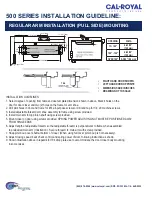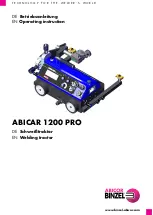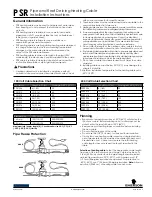
Chapter 02: Mounting / setting the cover in concrete
IMPORTANT!!!
To avoid damage to the cover, it is absolutely essential to comply with the following
instructions. Hailo accepts no liability or warranty for damage caused by improper
handling. The lid must sit correctly in the frame when creating the outer concrete
surround, and must be firmly screwed to the frame! Otherwise there is a risk that the
frame will move when the reinforcement is installed or when set into concrete. The
correct and secure positioning of the lid may then no longer be guaranteed.
1. The necessary openings in your structure derive from the customer’s statics
calculation and the formwork and reinforcement plans for the required concrete
surround. (Guide values, page 2+3)
2. Remove the parts supplied from the cover, e.g. the operator key or the gas-
pressurised springs. A level contact surface must be created for the shaft cover before
the cover is inserted into the opening in the structure. The depth of the contact surface,
measured from the top ground surface, depends on the design height of the cover.
The contact surface can be adjusted to the slope of the ground, but
no diagonal distortion of the cover must be caused.
3. Using appropriate lifting tackle or equipment, such as a crane, forklift, digger, etc.,
insert the shaft cover into the opening provided. The cover must only be introduced in a
closed and firmly-screwed condition. There are hooks at the corners into which ropes
or chains can be inserted.
4. Execute the horizontal alignment in accordance with the eventual carriageway.
For alignment, the frame can be shimmed on all sides.
5. Once the cover is finally fixed, seal the gap all the way round between frame and
structure (wooden framework, sealing strip, etc.).
6. Use the operator key to check whether the lid is firmly screwed to the frame. To
safeguard against lifting and movement when concreting, the cover may be secured
using ballast.
7. Insert the reinforcement around the cover into the opening provided for it, and
fasten the reinforcement to the masonry anchors of the shaft cover.
8. The cover can now be finish-poured. It is recommended that the concrete is rammed
with internal vibrocompactors. Allow for the setting times specified for the concrete.
9. After the concrete has set, the cover can be opened for the first time and the gas-
pressurised springs fitted and adjusted in accordance with the instructions.
10. Once all works have been completed, it is important to remove any concrete
residues and dirt from the frame and the lid. This ensures that your Hailo shaft cover
will have a long and trouble-free service life.
Status: 10-2021
Page 4 of 16


































